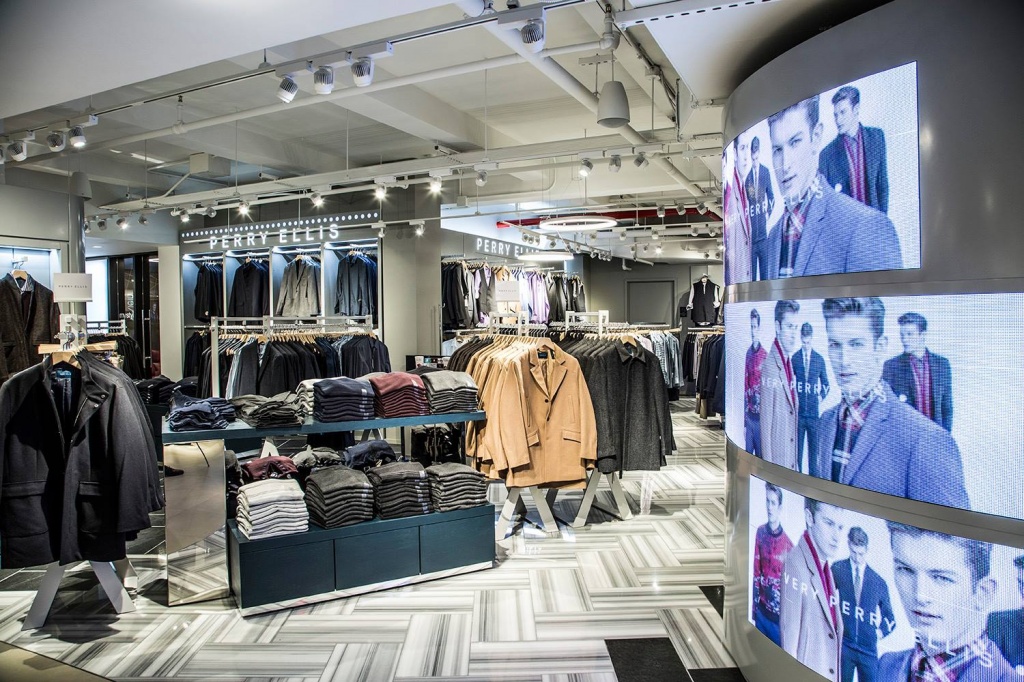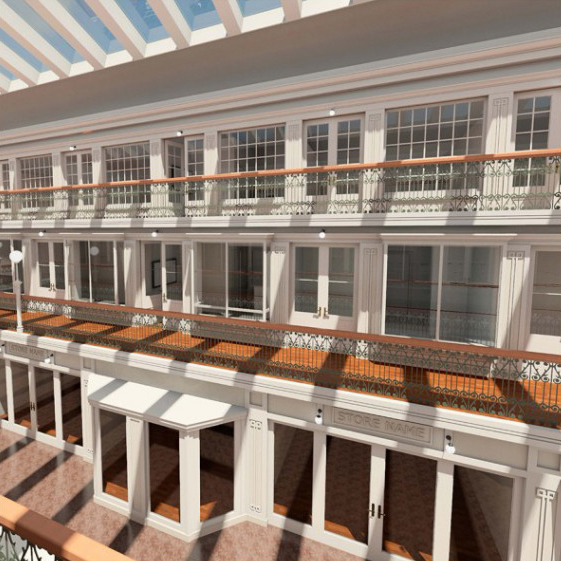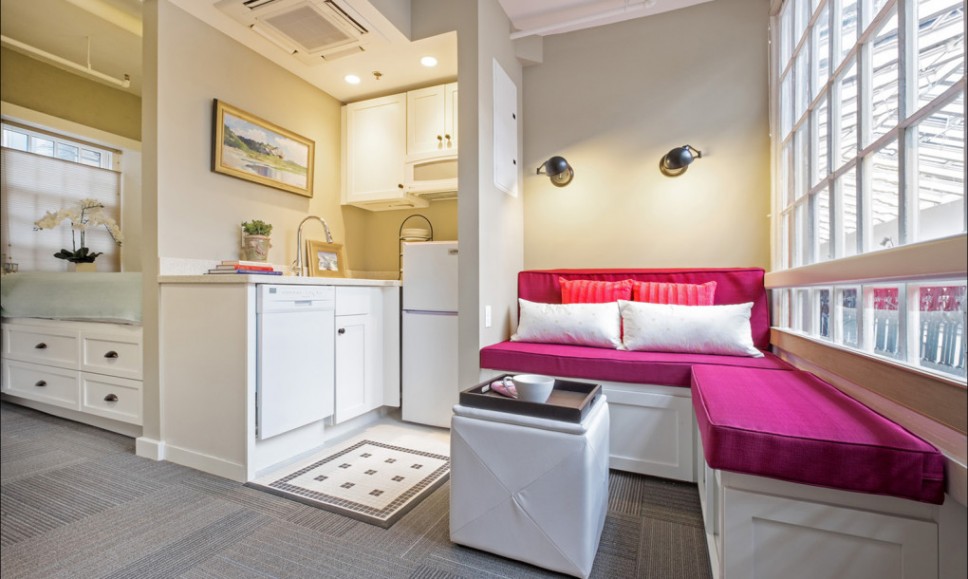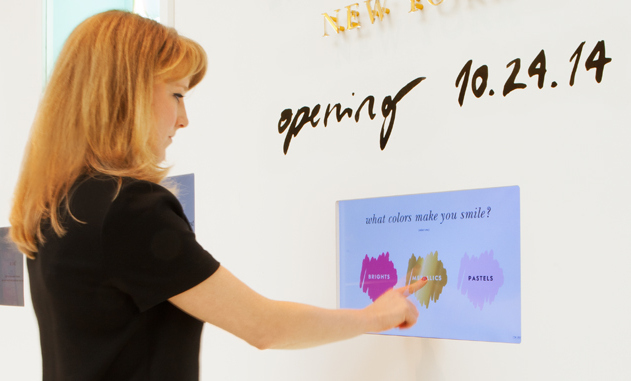



ACCORDING to a recent study from Green Street Advisors, about 15 percent of U.S. malls will fail or be converted to non-retail space. At the same time, online retailers are beginning to understand that simply marketing their brands online is not enough to differentiate them from their competition, and that brick and mortar is key to success. The retail landscape is shifting; a new balance between online, real world, sharing and impermanence is evolving.
The Evolution of the Mall
The mall shopping value to a consumer is largely swayed by what’s located within them; today the mall is not just for buying clothing and eating at traditional food establishments anymore. It is actually evolving into something much more dynamic. We are beginning to find communal areas, space services, premium food, temporary stores and even morning fitness classes.
“Mall developers and operators are starting to rethink many of the key pieces of their infrastructure; both operational and technical,” says Jeremy Bergstein, co-founder of The Science Project. “From lease models and data-sharing, to capital improvements in digital infrastructure, their challenges are no different than they always have been, but their resources and assets have changed.”
Bergstein believes that they can no longer rely on the value of their finite square footage and must learn to work beyond that.
Westfield Tackles the New Foundation of Brick and Mortar
The desire to meet consumer needs is not lost on mall companies in any way, nor is the need for them to become multi-use facilities that people gravitate toward. That’s exactly the approach Westfield is taking in its current and future retail developments. I spoke with Myf Ryan, Director of Marketing at Westfield, UK & Europe, on how Westfield was remaining relevant:
“At Westfield, we have two key global strategies: the physical and the digital. For the physical, our global strategy is to develop and operate iconic shopping centres in the world’s leading markets.This strategy is acutely important as the retailers have reduced their physical store footprint, instead opting for flagship stores that drive their omni-channel strategy. We have focused on creating flagship malls where retailers want to have their flagship stores and shoppers want to shop and we have heavily invested in digital technology which enhances the shopper experience and helps generate sales opportunities for our retailers.”
Ryan shared that driving footfall is key to the company in order to support retailers with their shopping centres. This past year, Westfield conducted a study called “How We Shop Now.” It surveyed over 8,000 shoppers who said that convenience and speed were the key meeting their needs. They are designing store flow to meet the immediacy that customers say they want.
“It takes around 10 years from finding the retail opportunity to opening a centre, and we need to continually look ahead to future-proof our business,” shared Ryan. “The outcome is that both our shopping centres, and the way in which we design, develop and manage them, are subject to constant evolution. We have always endeavoured to anticipate change and adapt,” she added.
Turning Malls Into Sustainable Living Communities
For the malls that decommissioned, there’s an wave of use cases developing. They are becoming living communities and more. Malls are even becoming self-sustaining communities in which can live, work and play. Just look at the $550 tiny apartments thatNortheast Collective created at the Arcade Providence in 2014. “Uses of the mall are expanding beyond and population density is taking place in major real estate markets. Mixed-use developments are smart options for scaling cities of any size,” says Bergstein. For Westfield, Ryan shared that the company is responding to customer demands by increasing their in-mall areas for food and dining, as well as creating events space for large-scale entertainment in new developments.
Malls Become Home to Shops Within Shops
As malls are based on sales of goods, the shifts in how we sell those goods to customers will precede the multi-use futures that are just coming into play. Enter the age of the pop-up. In a 2015 study done by Q&A Research and Consultancy (Jan 2016 GRI print edition), the group tested “mall within a mall” concepts that had participation from 60 retail partners, real estate firms, and technology partners like Dell, Toshiba and Cisco.
The concept store they developed has 15 shop-in-shops, which continually changed over the course of the year. These stores explored all kinds of technology to enhance consumer experience, to see what people enjoyed most. Q&A Research and Consultancy developed the program because 69 percent of study respondents said they would still like to shop in stores. The key was to find out what they gravitated toward. This study was an advanced take on a pop-up, overlaying technology into the impermanence of the whole event. As malls have space and as retailers continue to test event-based selling programs, the pop-up is clearly a key component of new sales and experience strategies.
According to Melissa Gonzalez, founder of the Lion’esque Group and author of The Pop Up Paradigm, pop-ups help brand awareness, and help retailers develop a deeper connection with customers. “Pop-ups are a new opportunity to learn more about your customers, what they gravitate towards, what are their questions, hesitations, what makes them convert to a sale,” said Gonzalez. “They are also a great way to test new partnerships,” she added.
Leveraging the Staying Power of Brick and Mortar
So, how do malls and retailers leverage the need for now and new to continually bring customers back in? In a modern marketer’s eyes, technology is beginning to solve some of the elements around service and fit that were previous mainstays. Dave Skaff, co-founder of The Science Project, believes that brick and mortar will have to fight back with something that will be harder to duplicate which factor into two tactics:
Localization: For e-commerce brands ever trapped in the conversion funnel, they must find ways to dramatically affect acquisition. Stores can do this like no other. By opening a local store, brands have a constant presence that can activate and create value in an entire region if they market properly.
Brand Experience: Obviously different for brand, multi-brand retailer and mall operator, the behavioural elements are the same. Offering emotional, convenient, entertaining and integrated experiences will ensure shoppers will visit, spend time and purchase. This has become the new advertising in many ways. A brand campaign is now trending toward a full brand experience that projects brand attributes across its entire retail landscape.
Leveraging complex location and experience factors are going to need to be supported in order to be successful. New marketing models will have to be developed that the mall cannot execute alone.
The New Mall Marketing Model
As the mall shifts, marketing becomes collaborative, not siloed. Raman and Jessica Kia, founders of The RJK Project, believe that malls will need to be able to leverage the consumer relationships they have established to get more exposure for their locations using the brand’s marketing channels. “Malls have a unique opportunity to change the conversation with their retail partners by offering unique resources used in savvier local marketing strategies to their communities, said Raman and Kia.
“They have invaluable insights into the local area and can also offer a connection to local partnership opportunities which create more footfall to the mall and give retailers the authenticity they need to create a more intimate relationship with their local customers.”
Build the Mall of the Future on the Right Foundation
Should malls and retailers fall victim to the shiny tech ball syndrome? Of course not, they should look to what they know best, customer satisfaction and efficiency, and overlay retail foundations with tech that meet shopper needs quickly and seamlessly as possible. Once the foundation is correct, then they need to approach technology through the lens of location and experience outlined by The RJK Project. From there, success will be developed if they keep the customers and company-wide successes as the end goal and not personal agenda.
Written by Macala Wright, originally published 11 March 2016 via www.psfk.com
It takes around 10 years from finding the retail opportunity to opening a centre, and we need to continually look ahead to future-proof our business
Myf Ryan



